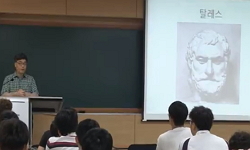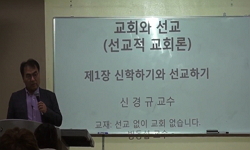본 연구는 체계론적 관점에서 현재 교회사회봉사시설들의 개방성을 분석하여 어느 정도인지를 알아보고 지역사회와의 상호작용측면을 고찰함으로써 개방체계로서의 교회사회봉사시설의 ...
http://chineseinput.net/에서 pinyin(병음)방식으로 중국어를 변환할 수 있습니다.
변환된 중국어를 복사하여 사용하시면 됩니다.
- 中文 을 입력하시려면 zhongwen을 입력하시고 space를누르시면됩니다.
- 北京 을 입력하시려면 beijing을 입력하시고 space를 누르시면 됩니다.
교회사회봉사시설의 개방성에 관한 연구 : 아동시설을 중심으로 = (A) study on the openness of church social service in facilities
한글로보기https://www.riss.kr/link?id=T7486930
- 저자
-
발행사항
부천 : 가톨릭대학교 대학원, 1997
-
학위논문사항
학위논문(석사) -- 가톨릭대학교 대학원 , 사회복지학과 , 1998. 2
-
발행연도
1997
-
작성언어
한국어
- 주제어
-
KDC
338.9 판사항(4)
-
발행국(도시)
경기도
-
형태사항
iv, 85p. : 삽도 ; 26cm.
-
일반주기명
참고문헌: p. 70-72
- 소장기관
-
0
상세조회 -
0
다운로드
부가정보
국문 초록 (Abstract)
본 연구는 교회 내에서 운영되고 있는 사회봉사를 위한 시설(아동시설)을 대상으로 서울(경기)지역에 한정하여 75개를 유의표집하여 조사했고, 빈도분석을 사용하여 통계분석하였다.
본 연구를 위해 교회사회봉사시설의 하위체계를 자원체계, 정보체계, 프로그램체계로 나누어서 지역사회와의 개방성과 접촉 및 관계형성의 개방성을 조사하였고 결과는 다음과 같다.
1) 자원체계는 인적자원과 물적자원으로 구분하여 조사하였다.
인적자원체계 : ① 시설직원은 거의 교인으로 구성되어 있었고, 시설직원의 모집방법은 시설직원 등 개인추천이 많았지만, 반면 공개적으로 모집하는 방법을 사용하는 시설도 많아 구성자체는 폐쇄적이지만 모집방법에 있어서는 개방적인 면이 존재했다.
② 이사회는 시설 중에서 이사회를 가지고 있는 시설자체가 드물었고 비민주적인 방법으로 선정되며 지역대표가 거의 참여하고 있지 않으므로 개방정도가 매우 낮았다. 그렇지만 이사회가 있는 시설의 이사회 활동은 매우 활발한 것으로 나타났다.
③ 자원봉사자에 관한 사항은 자원봉사자를 활용하는 시설이 매우 드물었으며, 대부분 교인이었고 자원봉사의 역할로 단순노력봉사로 한정되어 있어서 자원봉사자들의 교육이 매우 부실하였다. 결론적으로 인적자원을 구성하는 시설직원, 이사회, 자원봉사자로 나누어서 살펴본 시설의 개방성은 낮다.
물적자원체계 : ① 운영비의 구성내역은 다양하지 않으며, 자체 수익사업 및 조달에 역점을 두고 있어서 지역사회내의 물적자원을 대부분 이용하지 않을뿐더러 기관과의 개방성이 무척 낮게 나타났다.
② 운영비 중 교회가 전혀 부담하지 않는 시설이 절반 이상을 차지해 교회가 시설만 운영하게 해 놓고 운영비를 대부분 조달해 주지 않는 실태를 보여 주었다.
2) 정보체계는 홍보활동과 예산안, 재무사항에 대한 개방성을 조사하였다.
① 홍보활동: 홍보활동을 하는 시설은 많았으며 적어도 홍보방법을 2-3가지 이상 사용하여 지역사회주민에게 홍보를 하고 있는 것으로 나타났다. 따라서 시설의 홍보에 있어서는 개방적이다. 그렇지만, 단순히 홍보활동의 여부와 홍보방법의 가지수만으로 개방성을 논할 수 없으며 홍보활동의 회수와도 연관지어 보아야 한다.
② 예산안 : 예산안 수립에의 참가 정도와 예산안의 개방정도를 조사하였다. 예산안 수립에는 시설직원은 매우 적극적이었지만 지역사회주민은 전혀 참여하지 않는 경우가 많았고, 예산안에 대해 시설직원에게 알리고 있는 경우는 많았지만 지역사회주민에게는 전혀 알리고 있지 않아 개방성이 매우 낮았다.
③ 재무사항 : 재무사항의 개방정도를 조사하였는데, 마찬가지로 시설직원에게는 알리고 있는 경우가 많았지만, 지역사회주민에게는 전혀 알리지 않고 있어 아주 폐쇄적으로 조사되었다.
3) 프로그램체계는 프로그램 실시전 욕구조사와 프로그램 계획, 실시, 평가 단계 별로 개방성을 조사하였다.
① 욕구조사 : 욕구조사를 하는 시설이 적게 나타났으므로 지역사회주민의 욕구를 시설로 유입하는데 개방적이지 않았다.
② 프로그램 계획단계 : 계획에의 참여정도는 시설직원이 매우 적극적이었지만, 지역사회주민은 전혀 참여하지 않는 경우가 많았다.
③ 프로그램실시 단계 : 실시의 개방정도를 조사하였는데, 여기에는 시설직원 뿐만 아니라, 다른 프로그램단계에 비해 지역사회주민에게의 개방하는 정도가 높게 나타났다.
④ 프로그램 평가단계 : 프로그램 평가에의 참여하는 정도는 시설직원은 매우 적극적이었지만, 지역사회주민은 전혀 참여하지 않았다. 그리고 평가결과에 대해서도 시설직원에게는 잘 알리고 있는 경우가 많았지만, 지역사회주민에게는 거의 알리지 않았다. 결과적으로 프로그램단계에서는 개방성이 전체적으로 낮게 조사되었으며, 프로그램실시에 관한 개방정도에서만 지역사회주민에게 공개적으로 개방하고 있음이 나타났다.
4) 접촉 및 관계형성은 지역사회주민이 시설에의 참여, 시설직원의 지역사회에의 참여, 시설의 의뢰기관으로 나누어 조사하였다.
① 지역사회주민이 시설자원을 이용하는 경우가 적지는 않았지만, 전체 이용자 중에서는 매우 낮은 비율을 나타냈다. 그리고 공동으로 지역사회주민과 함께 프로그램을 하는 경우도 적었으며, 일시적인 행사에 국한되어 있어 지역사회주민이 지속적으로 프로그램에 참여하고 있지 않는 것으로 나타났다.
② 시설직원이 지역사회모임 또는 회의에 참여할 때는 지역행사와 같은 대규모의 모임이나 회의 보다는 시설장의 모임에 참여하는 경우가 매우 높게 나타났다.
③ 시설이 시설이용자를 관련기관에 의뢰하는 경우는 매우 낮았다. 따라서 지역사회주민과 시설의 관계에 있어 활발하게 유지되고 형성되어 있다고 볼 수 없으므로 개방성이 높지 않다.
조사결과상 교회사회봉사시설을 대상으로 아주 뚜렷하게 개방체계로서의 특성을 조사하지는 못했지만, 어느 정도 지역사회와 개방성을 가지고 있는지의 실태를 알아 보았다.
조직을 바라보는 관점에서 체계론적 관점으로 바라본 교회사회봉사시설이 상위체계인 지역사회와 낮은 개방성을 가지고 있다고 조사되었다. 이는 개방적일수록 조직의 효율성과 효과성이 높다는 이론에 근거하여 볼때에, 교회사회봉사시설이 좀 더 개방적으로 지역사회와 원활한 상호작용을 해야만 한다는 것을 보여준다.
이러한 교회사회봉사시설의 개방성은 지역사회의 통합을 위해 시설이 마땅히 해야할 일이며, 사회복지사와 같은 전문인력을 확보하고 보다 지역사회주민을 위한 시설운영을 해야 한다. 또한 교회사회봉사시설의 특수한 목적인 선교와 봉사를 한다고 하여 교회의 입장만을 표명하지 말고, 지역사회가 진정하게 무엇을 원하고 있는지 조사하며 그것에 따라 프로그램을 계획 · 실천 · 평가해야 한다.
교회사회봉사시설은 프로그램에 대한 사항을 지역사회주민과 공동으로 진행해 나갈수록, 지역사회 속에 있는 관련기관들과 유기적인 관계가 유지될수록, 보다 차원 높은 선교와 봉사를 할 수 있을 것이다.
본 연구는 체계론적 관점에서 현재 교회사회봉사시설들의 개방성을 분석하여 어느 정도인지를 알아보고 지역사회와의 상호작용측면을 고찰함으로써 개방체계로서의 교회사회봉사시설의 특성을 분석하며, 앞으로 교회사회봉사시설이 보다 효과적이고 전문적인 기능을 발휘할 수 있는 방안점을 찾는데 목적을 가진다. 이 연구를 통하여 교회사회봉사시설이 지역사회와의 관계 속에서 개입전략을 보다 더 구체화시키는데 있어 기초자료를 제공한다. 또한 교회사회봉사시설이 민간 사회복지시설의 하나로서 충분히 역할을 감당하여 우리나라의 사회복지에 이바지할 수 있도록 효과적이고 효율적인 서비스를 전달하기 위한 필요 사항을 개발하는데 도움을 주는 의의를 가진다. 더 나아가 교회사회봉사시설이 교회자체만의 시설이 아니라, 지역사회와의 상호작용 속에서 지역사회를 위한 시설이 되어야 된다는 인식을 심는다는데 의의를 둔다.
본 연구는 교회 내에서 운영되고 있는 사회봉사를 위한 시설(아동시설)을 대상으로 서울(경기)지역에 한정하여 75개를 유의표집하여 조사했고, 빈도분석을 사용하여 통계분석하였다.
본 연구를 위해 교회사회봉사시설의 하위체계를 자원체계, 정보체계, 프로그램체계로 나누어서 지역사회와의 개방성과 접촉 및 관계형성의 개방성을 조사하였고 결과는 다음과 같다.
1) 자원체계는 인적자원과 물적자원으로 구분하여 조사하였다.
인적자원체계 : ① 시설직원은 거의 교인으로 구성되어 있었고, 시설직원의 모집방법은 시설직원 등 개인추천이 많았지만, 반면 공개적으로 모집하는 방법을 사용하는 시설도 많아 구성자체는 폐쇄적이지만 모집방법에 있어서는 개방적인 면이 존재했다.
② 이사회는 시설 중에서 이사회를 가지고 있는 시설자체가 드물었고 비민주적인 방법으로 선정되며 지역대표가 거의 참여하고 있지 않으므로 개방정도가 매우 낮았다. 그렇지만 이사회가 있는 시설의 이사회 활동은 매우 활발한 것으로 나타났다.
③ 자원봉사자에 관한 사항은 자원봉사자를 활용하는 시설이 매우 드물었으며, 대부분 교인이었고 자원봉사의 역할로 단순노력봉사로 한정되어 있어서 자원봉사자들의 교육이 매우 부실하였다. 결론적으로 인적자원을 구성하는 시설직원, 이사회, 자원봉사자로 나누어서 살펴본 시설의 개방성은 낮다.
물적자원체계 : ① 운영비의 구성내역은 다양하지 않으며, 자체 수익사업 및 조달에 역점을 두고 있어서 지역사회내의 물적자원을 대부분 이용하지 않을뿐더러 기관과의 개방성이 무척 낮게 나타났다.
② 운영비 중 교회가 전혀 부담하지 않는 시설이 절반 이상을 차지해 교회가 시설만 운영하게 해 놓고 운영비를 대부분 조달해 주지 않는 실태를 보여 주었다.
2) 정보체계는 홍보활동과 예산안, 재무사항에 대한 개방성을 조사하였다.
① 홍보활동: 홍보활동을 하는 시설은 많았으며 적어도 홍보방법을 2-3가지 이상 사용하여 지역사회주민에게 홍보를 하고 있는 것으로 나타났다. 따라서 시설의 홍보에 있어서는 개방적이다. 그렇지만, 단순히 홍보활동의 여부와 홍보방법의 가지수만으로 개방성을 논할 수 없으며 홍보활동의 회수와도 연관지어 보아야 한다.
② 예산안 : 예산안 수립에의 참가 정도와 예산안의 개방정도를 조사하였다. 예산안 수립에는 시설직원은 매우 적극적이었지만 지역사회주민은 전혀 참여하지 않는 경우가 많았고, 예산안에 대해 시설직원에게 알리고 있는 경우는 많았지만 지역사회주민에게는 전혀 알리고 있지 않아 개방성이 매우 낮았다.
③ 재무사항 : 재무사항의 개방정도를 조사하였는데, 마찬가지로 시설직원에게는 알리고 있는 경우가 많았지만, 지역사회주민에게는 전혀 알리지 않고 있어 아주 폐쇄적으로 조사되었다.
3) 프로그램체계는 프로그램 실시전 욕구조사와 프로그램 계획, 실시, 평가 단계 별로 개방성을 조사하였다.
① 욕구조사 : 욕구조사를 하는 시설이 적게 나타났으므로 지역사회주민의 욕구를 시설로 유입하는데 개방적이지 않았다.
② 프로그램 계획단계 : 계획에의 참여정도는 시설직원이 매우 적극적이었지만, 지역사회주민은 전혀 참여하지 않는 경우가 많았다.
③ 프로그램실시 단계 : 실시의 개방정도를 조사하였는데, 여기에는 시설직원 뿐만 아니라, 다른 프로그램단계에 비해 지역사회주민에게의 개방하는 정도가 높게 나타났다.
④ 프로그램 평가단계 : 프로그램 평가에의 참여하는 정도는 시설직원은 매우 적극적이었지만, 지역사회주민은 전혀 참여하지 않았다. 그리고 평가결과에 대해서도 시설직원에게는 잘 알리고 있는 경우가 많았지만, 지역사회주민에게는 거의 알리지 않았다. 결과적으로 프로그램단계에서는 개방성이 전체적으로 낮게 조사되었으며, 프로그램실시에 관한 개방정도에서만 지역사회주민에게 공개적으로 개방하고 있음이 나타났다.
4) 접촉 및 관계형성은 지역사회주민이 시설에의 참여, 시설직원의 지역사회에의 참여, 시설의 의뢰기관으로 나누어 조사하였다.
① 지역사회주민이 시설자원을 이용하는 경우가 적지는 않았지만, 전체 이용자 중에서는 매우 낮은 비율을 나타냈다. 그리고 공동으로 지역사회주민과 함께 프로그램을 하는 경우도 적었으며, 일시적인 행사에 국한되어 있어 지역사회주민이 지속적으로 프로그램에 참여하고 있지 않는 것으로 나타났다.
② 시설직원이 지역사회모임 또는 회의에 참여할 때는 지역행사와 같은 대규모의 모임이나 회의 보다는 시설장의 모임에 참여하는 경우가 매우 높게 나타났다.
③ 시설이 시설이용자를 관련기관에 의뢰하는 경우는 매우 낮았다. 따라서 지역사회주민과 시설의 관계에 있어 활발하게 유지되고 형성되어 있다고 볼 수 없으므로 개방성이 높지 않다.
조사결과상 교회사회봉사시설을 대상으로 아주 뚜렷하게 개방체계로서의 특성을 조사하지는 못했지만, 어느 정도 지역사회와 개방성을 가지고 있는지의 실태를 알아 보았다.
조직을 바라보는 관점에서 체계론적 관점으로 바라본 교회사회봉사시설이 상위체계인 지역사회와 낮은 개방성을 가지고 있다고 조사되었다. 이는 개방적일수록 조직의 효율성과 효과성이 높다는 이론에 근거하여 볼때에, 교회사회봉사시설이 좀 더 개방적으로 지역사회와 원활한 상호작용을 해야만 한다는 것을 보여준다.
이러한 교회사회봉사시설의 개방성은 지역사회의 통합을 위해 시설이 마땅히 해야할 일이며, 사회복지사와 같은 전문인력을 확보하고 보다 지역사회주민을 위한 시설운영을 해야 한다. 또한 교회사회봉사시설의 특수한 목적인 선교와 봉사를 한다고 하여 교회의 입장만을 표명하지 말고, 지역사회가 진정하게 무엇을 원하고 있는지 조사하며 그것에 따라 프로그램을 계획 · 실천 · 평가해야 한다.
교회사회봉사시설은 프로그램에 대한 사항을 지역사회주민과 공동으로 진행해 나갈수록, 지역사회 속에 있는 관련기관들과 유기적인 관계가 유지될수록, 보다 차원 높은 선교와 봉사를 할 수 있을 것이다.
다국어 초록 (Multilingual Abstract)
The results of the study are expected to offer basic information on the community intervention of church social service in facilities.
The siginificance of the study is to help church social service in facilities as the private sector effecting participate in social welfare services in Korea. The churches should keep in mind that church social service in acilities are not for themselves but for the community.
The sample was collected from 75 churches located in Seoul through the purposive method. The respondents consisted of managers who were charged of church social service in facilities. The collected data were analyzed by frequency ditributions and percentage, using SPSSWIN.
For the study, the facilities were devided into four sub-systems as follows the system of resources, information, programs, relationships with the community. 1) The system of the resources consisted of the human resources and physical resources. The employees of church social service in facilities were the members of their own church. Most facilities hired the employees who were recommeded personally. Most facilities were operated without the boards of directors. Even though the boards of directors existed, the members consisted the church members, not the representatives from the community. Some facilities used volunteers from the church members, however the volunteers did just simple jobs. Few volunteers were educated for the volunteers. About the system of the physical resources, the components of the operational expenses were not specified. Most facilities did not use the physical resources in community. Most churches did not support the operational expenses of the facilities. It can be concluded that the system of the human resources and the physical resources was not opened. 2) The system of the information consisted of the public relation, budget, and financial affairs. Most facilities did the public relation(at least 2-3), moreover, few churches opened the information about budget and to the public. It can be concluded that the system of the information except the public relation was not opened. 3) The system of programs consisted of a need analysis, program planning, acting, and evaluation. Most facilities did not perform a need analysis for their programs. So the services were not provided without considering the clients' needs. The opportunity of community residents to participate in program planning and evaluation was restrictly limited. Moreover, the acting of facilities were generally opened to the community. It can be concluded that the system of program except program acting was not opened. 4) The number of the members in community using the resources of the facilities was not low, in fact, it's percentage was very low. Many members of the facilities were participated in the meeting of employees, not the meeting or conference of the community. And most facilities did not refer to other facilities or organization of the social work. So the relation between the facilities and the community was closed.
In the system perspectives about the organization, church social service in facilities was not opened. So they were not related with the community, their high system. The more they open themseveles, the better effective their organizational management is. In order to improve their organizational effectiveness, they must open their resoureces, information, programs and so on. Relating the community, they have to engage professionals of the social work. Then they will do their origial purpose(Mission) as well as serve the members in community.
The purpose of this study is to analyze the openness of church social service in facilities using the system theory, to examine the characteristics of church social service in facilities as a open system, and to suggest implication for improving the e...
The purpose of this study is to analyze the openness of church social service in facilities using the system theory, to examine the characteristics of church social service in facilities as a open system, and to suggest implication for improving the effectiveness.
The results of the study are expected to offer basic information on the community intervention of church social service in facilities.
The siginificance of the study is to help church social service in facilities as the private sector effecting participate in social welfare services in Korea. The churches should keep in mind that church social service in acilities are not for themselves but for the community.
The sample was collected from 75 churches located in Seoul through the purposive method. The respondents consisted of managers who were charged of church social service in facilities. The collected data were analyzed by frequency ditributions and percentage, using SPSSWIN.
For the study, the facilities were devided into four sub-systems as follows the system of resources, information, programs, relationships with the community. 1) The system of the resources consisted of the human resources and physical resources. The employees of church social service in facilities were the members of their own church. Most facilities hired the employees who were recommeded personally. Most facilities were operated without the boards of directors. Even though the boards of directors existed, the members consisted the church members, not the representatives from the community. Some facilities used volunteers from the church members, however the volunteers did just simple jobs. Few volunteers were educated for the volunteers. About the system of the physical resources, the components of the operational expenses were not specified. Most facilities did not use the physical resources in community. Most churches did not support the operational expenses of the facilities. It can be concluded that the system of the human resources and the physical resources was not opened. 2) The system of the information consisted of the public relation, budget, and financial affairs. Most facilities did the public relation(at least 2-3), moreover, few churches opened the information about budget and to the public. It can be concluded that the system of the information except the public relation was not opened. 3) The system of programs consisted of a need analysis, program planning, acting, and evaluation. Most facilities did not perform a need analysis for their programs. So the services were not provided without considering the clients' needs. The opportunity of community residents to participate in program planning and evaluation was restrictly limited. Moreover, the acting of facilities were generally opened to the community. It can be concluded that the system of program except program acting was not opened. 4) The number of the members in community using the resources of the facilities was not low, in fact, it's percentage was very low. Many members of the facilities were participated in the meeting of employees, not the meeting or conference of the community. And most facilities did not refer to other facilities or organization of the social work. So the relation between the facilities and the community was closed.
In the system perspectives about the organization, church social service in facilities was not opened. So they were not related with the community, their high system. The more they open themseveles, the better effective their organizational management is. In order to improve their organizational effectiveness, they must open their resoureces, information, programs and so on. Relating the community, they have to engage professionals of the social work. Then they will do their origial purpose(Mission) as well as serve the members in community.
목차 (Table of Contents)
- 목차 = Ⅰ
- 논문개요 = 1
- Ⅰ. 서론 = 6
- 제1절 문제제기 및 연구의 필요성 = 6
- 제2절 연구의 목적 및 의의 = 9
- 목차 = Ⅰ
- 논문개요 = 1
- Ⅰ. 서론 = 6
- 제1절 문제제기 및 연구의 필요성 = 6
- 제2절 연구의 목적 및 의의 = 9
- 제3절 연구문제 및 연구내용 = 10
- 제4절 연구의 제한점 = 12
- Ⅱ. 이론적 배경 = 13
- 제1절 교회사회봉사시설의 개념과 필요성 = 13
- 1. 교회사회봉사시설의 개념 = 13
- 2. 교회사회봉사시설의 필요성 = 16
- 제2절 조직이론에서의 체계론적 관점 = 19
- 1. 체계론적 관점 = 19
- 2. 개방체계의 특성 = 20
- 3. 조직이론에서의 체계론적 관점 = 21
- 제3절 개방체계로서 교회사회봉사시설 = 23
- 1. 자원체계 = 24
- 2. 정보체계 및 프로그램체계 = 24
- 3. 접촉 및 관계형성 = 25
- 제4절 연구분석틀 = 27
- Ⅲ. 연구방법 및 절차 = 28
- 제1절 조사대상 및 표집방법 = 28
- 제2절 조사도구 및 설문구성 = 28
- 제3절 자료분석방법 = 29
- Ⅳ. 조사결과 = 30
- 제1절 조사대상시설의 일반적 특성 = 30
- 제2절 조사대상시설의 개방성 정도 = 35
- 1. 자원체계 = 36
- 2. 정보체계 = 47
- 3. 프로그램체계 = 51
- 4. 접촉 및 관계형성 = 57
- Ⅴ. 결론 및 제언 = 65
- 제1절 조사결과요약 = 65
- 제2절 제언 = 68
- 〈참고문헌〉 = 70
- 질문지 = 73
- ABSTRCT = 83












